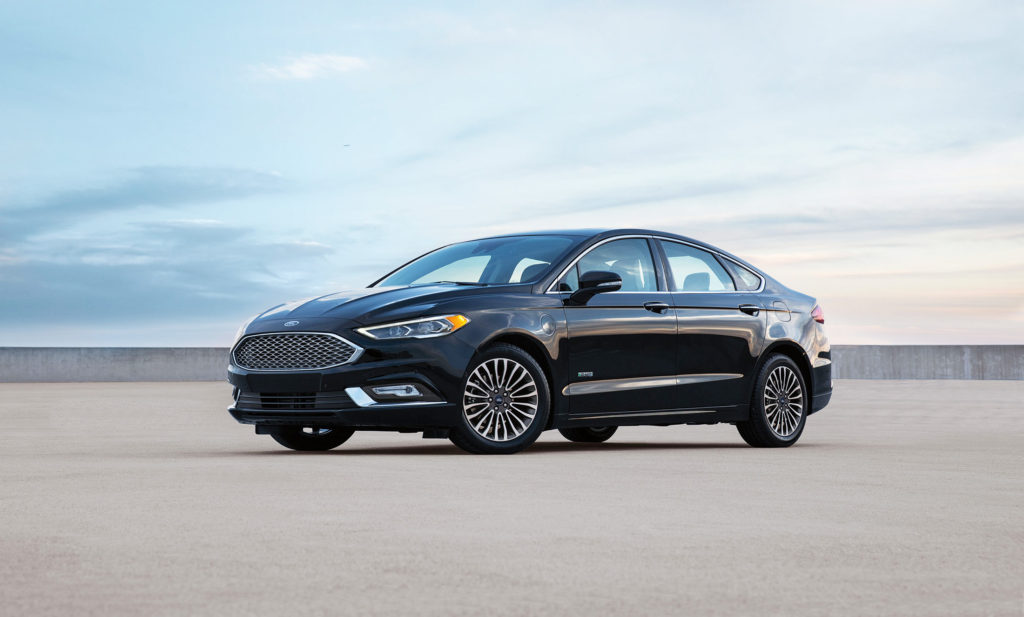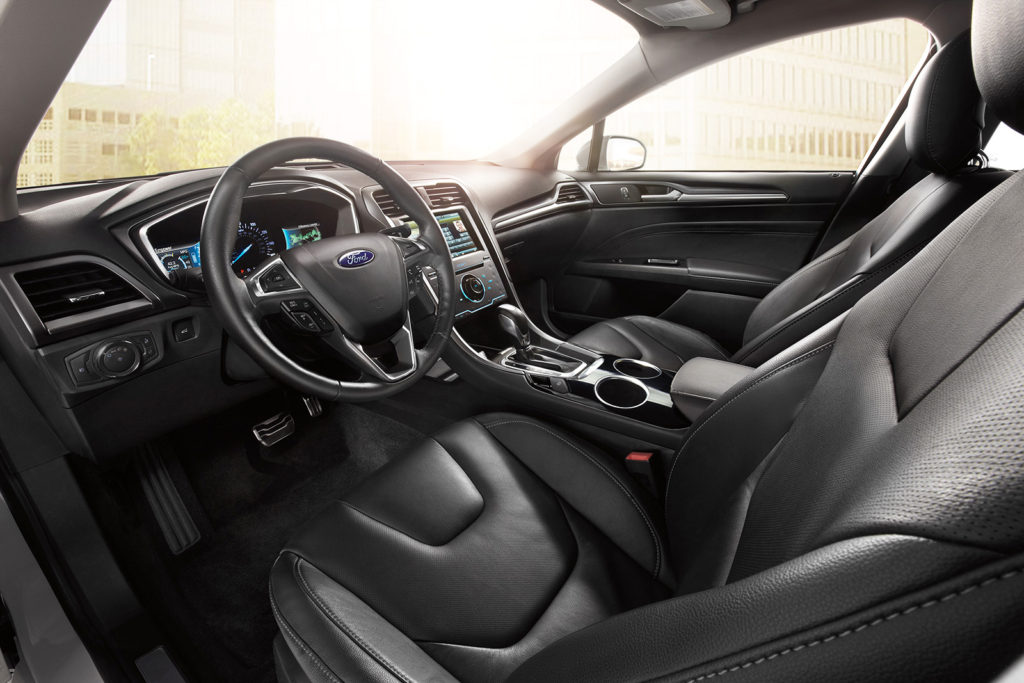Cargazing
By Derek Price
The Ford Fusion Energi is a car that begs you to do math.
This plug-in hybrid can drive under pure electric power for up to 21 miles before its gasoline engine kicks in, which makes nerds everywhere want to whip out a spreadsheet to see what their fuel cost savings might be.
For this nerd? It was incredible.
I spent a week testing the 2017 Fusion Energi, which starts at $32,120 (or $41,120 for my fancy Platinum-level tester) and burned almost no gas for my real-life driving. While Ford rates it for a 21-mile electric range, my lead-foot habits gave me 16 or 17 miles on each full charge, which was still enough for the vast majority of my daily trips.
A full charge takes around 7 hours on ordinary 120-volt household current, but you can speed it up to 2.5 hours if you install a 240-volt charger and wiring in your garage.
The Fusion Energi isn’t just an electric car, though. It’s also a regular hybrid, complete with a 2.0-liter gasoline engine that can keep you going for a total range of 610 miles.
That presents a challenge for your spreadsheet. Your fuel cost will vary dramatically depending on how many long trips vs. short trips you take in it.

The Fusion Energi can be identified by the electric charging port on the front left fender. It can drive under electric power for up to 21 miles before its gasoline engine is needed.
To help you out, the federal government has come up with a complicated, confusing “MPG equivalent” number for cars like this. They rate the Fusion Energi at 97 mpge for combined city and highway driving.
While that number is almost meaningless for drivers in the real world — no one will get that exact figure unless their trip length and driving habits are exactly like the EPA’s standard, which never happens — it does provide a benchmark to compare this plug-in hybrid to others on the market.
The Fusion Energi is more efficient than the BMW 330e and Audi A3 e-tron, for example, but slightly less efficient than the Chevrolet Volt and miles behind the Toyota Prius Prime, if you trust the government’s numbers.
Those cars are dramatically different, though, and the thing that strikes me about the plug-in Fusion is what a complete, substantial car it is. The Prius Prime is much smaller, with only two seats in back, while the Ford has a more traditional roomy cabin and seating for five. Granted, the plug-in Fusion has reduced trunk space to make way for the massive battery bank and related electronics in there.
From a comfort perspective, this car excels. Ford makes some of the cushiest seats on the market today, a perfect fit for the quiet, smooth-riding Fusion Platinum that’s designed to tempt some luxury-brand buyers with a refined driving feel and large feature set.
Even compared to a lot of crossovers and SUVs, I’d prefer a Fusion on the highway. It’s a great fit for long, straight American roads.

The Fusion’s quiet cabin, long feature list and cushy seats on high-end Platinum models are tempting for luxury shoppers.
A couple of minor issues make me question the details on this car. One, the nifty rotating lid that covers the electric charging port feels light and flimsy. It doesn’t leave a solid impression when you operate it.
And two, I noticed the gaps around the trunk lid looked slightly uneven on my tester. It’s a picky thing, sure, but it stood out against the pattern of nearly flawless build quality I’ve seen from contemporary Fords.
As a whole, though, the Fusion Energi is a compelling option for people who want an electric car but don’t want to give up the range and satisfaction of a gasoline engine.
It drives like a comfortable, spacious, quiet sedan, while letting you make around-town trips without burning a drop of fuel.
For a car to shuttle children, commute to work and run errands on a budget, that’s a beautiful equation.
At A Glance
What was tested?
2017 Ford Fusion Platinum Energi ($41,120). Options: None. Price as tested (including $875 destination charge): $41,995
Wheelbase: 112.2 in.
Length: 191.8 in.
Width: 83.5 in.
Height: 58 in.
Power: 2.0-liter four cylinder and 88 Kw electric motor (188 combined system hp)
Transmission: eCVT automatic
Fuel economy: 104 mpge city, 91 mpge highway
RATINGS
Style: 9
Performance: 8
Price: 8
Handling: 6
Ride: 8
Comfort: 9
Quality: 6
Overall: 7
Why buy it?
It can run on electric power for short trips but still feels roomy, quiet and substantial, unlike many electric cars. It’s surprisingly cushy for a plug-in hybrid and has a long, 610-mile total range when you use gasoline.
